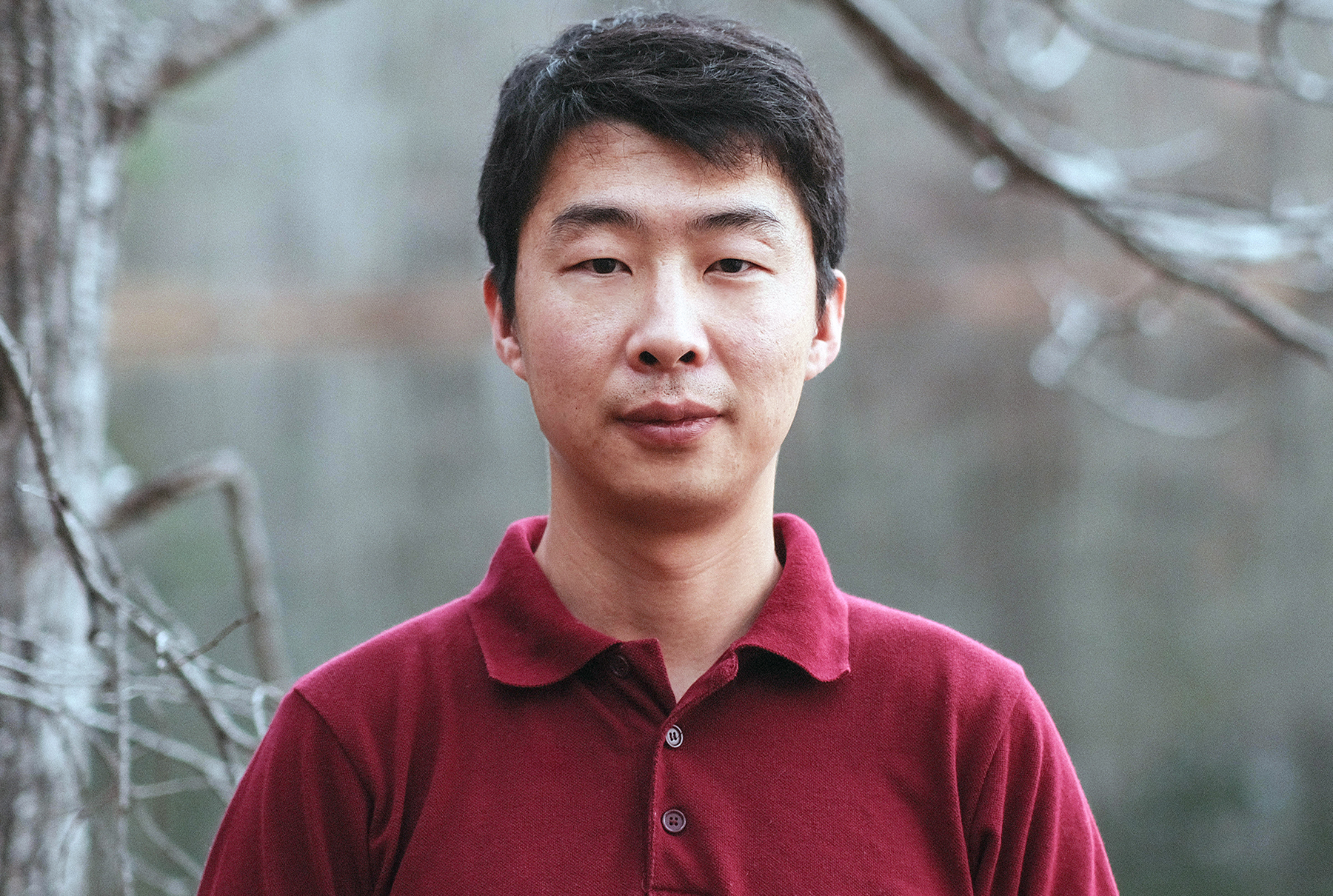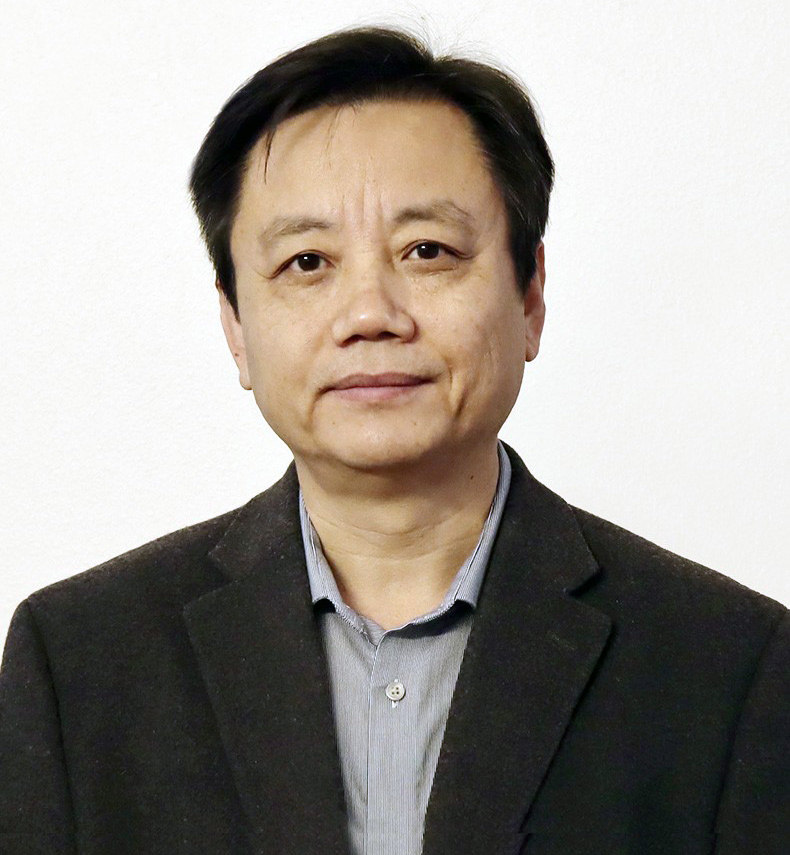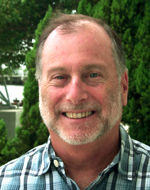Physical Oceanography
Overview

Brian Barnes
Assistant Research Professor
PhD, University of South Florida, 2013
Office Phone: 727-553-1111
Email: bbarnes4@usf.edu
CV: View PDF
Research: Satellite Remote Sensing, Ocean Optics, Coastal Water Quality, Atmospheric correction, Benthic Classification
Specialties: Optically Shallow Waters, Satellite Calibration, Dredging Plumes, Satellite Data Dissemination
Dr. Barnes has been a research associate in the Optical Oceanography Lab at the University of South Florida College of Marine Science since 2015. His research focuses on assessment and monitoring of coastal systems from satellite remote sensing platforms. In particular, he is working to improve satellite derivations of water quality and benthic classification in optically shallow marine environments, including coral reefs and seagrass beds. Dr. Barnes has also worked to assess single- and cross-sensor calibration of satellite ocean color sensors, with the goal of improving these datasets towards assessment of water quality trends on climactic scales. He is currently a member of the NASA PACE Science and Applications Team, working to develop approaches for use with the next generation of satellite ocean color sensors.

Don P. Chambers
Professor
Physical Oceanography
Ph.D., University of Texas at Austin, 1996
Office Phone: 727.553.3351
Email: donc@usf.edu
CV: View PDF
Satellite Oceanography Laboratory
Dr. Don P. Chambers on Google Scholar
Southern Ocean Science Website
Research: Using satellite observations to understand climate change and ocean dynamics.
Dr. Chambers specializes in using satellite observations such as radar altimetry and satellite gravimetry to better understand ocean dynamics. His primary research focus is quantifying and understanding sea level variability, especially trying to separate natural climate variability from anthropogenic climate change. He is in interested in all the dynamical processes that cause sea level change, including ocean circulation, ocean heat storage, ocean mass redistribution, and influx of fresh water from the continents and ice sheets.
Dr. Chambers has over 25 years of experience in the field of sea level science. He is an internationally recognized expert in the use of satellite and ocean temperature observations to understand the relative contributions of thermal expansion and mass input from glaciers and ice sheets to changes in global mean sea level. Dr. Chambers has served on numerous national and international science committees related to sea level, including the Intergovernmental Panel on Climate Change from 2010-2014 and the National Academy of Sciences Decadal Survey for Earth Science and Applications from Space from 2016–2018.

Yao Fu
Assistant Professor
Physical Oceanography
Ph.D. GEOMAR Helmholtz Centre for Ocean Research Kiel and Kiel University, Germany
Office Phone: 727.553.1104
Email: yaofu@gatech.edu
CV: View PDF
Research: Large-scale ocean circulation and its climate impacts
Dr. Fu is a physical oceanographer and an assistant professor at the College of Marine Science. His research focuses on large-scale ocean circulation in the Atlantic Ocean and its impact on global climate. Dr. Fu is particularly interested in the variability of the Atlantic Meridional Overturning Circulation (AMOC), wind-driven Subtropical Cells and gyre circulation, as well as the role of ocean circulation in redistributing heat, freshwater, oxygen and carbon on global scales. His approach combines the analysis of satellite and in-situ observations with simulations from ocean and climate models to understand circulation dynamics and predict future changes in ocean and climate systems.
Dr. Fu is recruiting graduate students to start in fall 2025. Please see the Prospective student webpage for information about the application process.

Boris Galperin
Associate Professor
Physical Oceanography
Ph.D., Technion-Israel Institute of Technology, 1982
Office Phone: 727.553.1249
Email: bgalperin@usf.edu
CV: View PDF
Zonal Jets and Eddies – Planetary Science and Satellite Oceanography at the Crossroads
Research: Atmospheric; Oceanic and Planetary Turbulence; Theory, Modeling, Experiments.
Circulations in atmospheric, oceanic and planetary systems feature turbulence and different kinds of waves. The character of turbulence – wave interaction changes from scale to scale and, due to strong nonlinearity, processes on different scales affect each other in many different ways. On the largest scales, a flow may become strongly anisotropic and self-organize into a system of alternating bands as observed on all giant planets. Similar but much weaker bands exist in the world ocean. We have discovered a new flow regime underlying this phenomenon; today it is known as zonostrophic turbulence. The existence of this regime on Jupiter has been confirmed by the data collected by a spacecraft Cassini.
My group is continuing this research using theoretical, numerical and experimental techniques. In addition, we develop novel analytical tools to describe turbulence – wave interactions and develop models that can be used in codes describing oceanic and atmospheric circulations on different scales. One of such tools is the Quasi-Normal Scale Elimination (QNSE) model that has been implemented in the state-of-the-art numerical weather prediction system WRF (Weather Research and Forecasting) developed at the National Center for Atmospheric Research (NCAR). This research is also ongoing.

Chuanmin Hu
Professor
Optical Oceanography
Ph.D., University of Miami, Physics Dept., 1997
Office Phone: 727.553.3987
Email: huc@usf.edu
CV: View PDF
Optical Oceanography Laboratory Website
Dr. Chuanmin Hu on Google Scholar
Research: Ocean Optics and Optical Remote Sensing.
Nearly all marine life depends on light. Dr. Hu’s research is focused on addressing coastal ocean problems using primarily optics. These problems include river-ocean interactions (transport and transform of particulate and dissolved matters), carbon cycling, algal blooms, coral reef environmental health and ecosystem connectivity, climate change and anthropogenic influence on coastal/estuarine water quality. As light exists both below and above the surface of the ocean, Dr. Hu and his group members at the Optical Oceanography Lab approach these problems through 1) characterizing the underwater light field using the state-of-the-art optical equipment; 2) developing satellite remote sensing algorithms and data products specifically targeted to these problems; and 3) integrating these products with other data to understand coastal ocean changes in bio-optical properties as well as their causes and consequences.
The current research at OOL emphasizes the use of autonomous underwater vehicles (AUVs) to better understand the 3-dimensional light field and algal bloom formation, and high-resolution satellite remote sensing from which customized data products are derived for estuaries, turbid coastal waters, and optically shallow waters (e.g., coral reefs, seagrass). The recent establishment of a virtual antenna system (VAS) and a virtual buoy system (VBS) greatly facilitates data and information sharing on coastal blooms and general water quality with a variety of user groups.

Yonggang Liu
Associate Professor
Physical Oceanography
PhD, University of South Florida
Postdoc, University of Washington
Office Phone: 727-553-3508
Email: yliu@usf.edu
CV: View PDF
Google Scholar
Ocean Circulation Lab
Research: ocean circulation; coastal ocean observing; numerical modeling; Karenia brevis red tide; storm surge; coastal inundation; water quality monitoring; Sargassum tracking; pollutant plume forecast; Deepwater Horizon oil spill; Loop Current
Dr. Yonggang Liu is the Director of the Ocean Circulation Lab at USF College of Marine Science. As a physical oceanographer, he aims to better understand the coastal ocean circulation and air-sea interactions on the West Florida Shelf, including the exchanges of water properties between the estuaries, the shelf, and the offshore (Loop Current) system of the Gulf of America (Gulf of Mexico). He is interested in applying the scientific research to marine environmental issues of societal importance, such as Karenia brevis red tide tracking and seasonal prediction, hurricane rapid intensification, storm surge and coastal inundation forecasts, Sargassum tracking, wastewater plume modeling, and oil spill tracking.
His research team maintains a coordinated coastal ocean observing and modeling program focusing on the West Florida Shelf and the estuaries. The observing component include (1) the Coastal Ocean Monitoring and Prediction System (COMPS), an array of moorings measuring real-time current velocity, temperature, salinity and meteorological data on the shelf, (2) the Tampa Bay Observing Network (TBON), real-time water quality monitoring stations, and (3) the COMPS shore-based HF Radar arrays on the west Florida coast overlooking the moorings and along the Florida Keys measuring surface currents in the Straits of Florida.
The modeling component consists of three high-resolution unstructured grid numerical models, the West Florida Coastal Ocean Model (WFCOM), the Tampa Bay Coastal Ocean Model (TBCOM), and the East Florida Shelf Coastal Ocean Model (EFCOM, in development), all set to be automated nowcast/forecast systems, providing realistic forecast of three-dimensional ocean circulation. These modeling systems are used to forecast water level fluctuations (storm surge) along the entire Florida coast and the northeastern Gulf, to track red tide and Sargassum. A coupled physical-biological model of red tide is also developed.
Dr. Liu is interested in applying advanced data analysis methods in meteorology and oceanography. He proposed the rectified wavelet power spectral analysis and the drifter-based skill score for trajectory model evaluation. Dr. Liu is also a pioneer of machine learning application in physical oceanography. He introduced the Self-Organizing Map (SOM), an unsupervised neural network, to the physical oceanography community in 2005. He then proposed the dual-SOM application in 2016.
Dr. Liu currently serves as an Associate Editor for AMS Journal Artificial Intelligence for the Earth Systems, and a Guest Editor for Ocean Science. He is on the Science Committee of the Southeast Coastal Ocean Observing Regional Association (SECOORA).

Mark E. Luther
Associate Professor
Physical Oceanography
Ph.D., University of North Carolina at Chapel Hill, 1982
Office Phone: 727.553.1528
Email: mluther@usf.edu
CV: View PDF
Ocean Modeling and Prediction Laboratory Website
Research: Maritime Safety and Security; Real-Time Ocean Observation Systems; Numerical Models of Ocean Circulation; Coastal Water Quality.
Dr. Luther is Director of the Ocean Monitoring and Prediction Lab in the University of South Florida College of Marine Science, where he co-directs the Coastal Ocean Monitoring and Prediction System. Dr. Luther’s research involves the combination of real-time ocean observations with numerical models of ocean currents and processes and their application to various problems ranging from maritime safety and security to water quality in estuaries to variability in large-scale ocean circulation and its relation to climate change. He has provided operation and maintenance support for the NOAA/NOS Tampa Bay Physical Oceanographic Real-Time System (TB-PORTS) since 1995. He is a founding member and past Chairman of the Board of Directors of the Alliance for Coastal Technologies, a NOAA-funded partnership of research institutions, resource managers, and private sector companies dedicated to fostering the development and adoption of effective and reliable sensors and platforms for coastal ocean monitoring. He presently serves on the Tampa Bay Harbor Safety and Security Committee Technical Subcommittee and the Tampa Bay Regional Planning Council Agency on Bay Management. He is Chairman of the Board for the Secrets of the Sea Marine Exploration Center and Aquarium and is chairman of the International Seakeepers Society Science Advisory Council.

Gary Mitchum
Associate Dean, Professor
Physical Oceanography
Ph.D., Florida State University, 1984
Office Phone: 727.553.3941
Email: mitchum@usf.edu
CV: View PDF
Research: Climate Change; Ocean Eddies; Satellite Remote Sensing; and Sea Level Rise.
Professor Mitchum has been a faculty member in the College of Marine Science at the University of South Florida since 1996. Prior to coming to the USF he was a faculty member in the Department of Oceanography at the University of Hawaii where he was also the Director of the University of Hawaii Sea Level Center. His interest in sea level rise began there in the mid-1980’s, and he remains especially interested in the study of 20th century sea level rise. Professor Mitchum’s research focuses on the use of satellite and in situ data to study sea level variations and climate change. In addition, he also works on a wide variety of problems in the general area of ocean physics, including ocean eddies, the El Nino phenomenon, internal tides and various types of ocean waves. He also has a long-standing interest in the application of ocean physics to improve our understanding of fisheries.
Dr. Mitchum currently serves as the Associate Dean for Research for the college.

Robert H. Weisberg
Emeritus, Distinguished University Professor
Physical Oceanography
Ph.D., University of Rhode Island, 1975
Office Phone: 727.553.1568
Email: weisberg@usf.edu
CV: View PDF
Ocean Circulation Group Website
Research: Ocean Circulation; Ocean-Atmosphere Interaction Studies in the Tropics; and West Florida Continental Shelf Circulation
Specialties: Physical Oceanography, Continental Shelf and Estuary Circulation, Marine Observations and Modeling, Forensic Studies
Applications to: Hurricane Storm Surge and Waves, Harmful Algal Blooms, Spill Tracking, Fish Recruitment and Location
Dr. Weisberg is an experimental physical oceanographer engaged in ocean circulation and ocean-atmosphere interaction studies in the tropics, on continental shelves, and in estuaries. His research presently emphasizes the West Florida Continental Shelf (WFS) circulation and the interactions occurring between the shelf and the deep-ocean and between the shelf and the estuaries. Through his Ocean Circulation Group he maintains a coordinated program of real-time, in-situ measurements, analyses, and numerical circulation models aimed at describing and understanding those processes that determine WFS water properties. Observations consist of surface moorings for real time surface meteorology, water column ocean currents, and temperature/salinity (T/S), some inclusive of waves; subsurface moorings for currents; HF-radar for surface currents; profilers for T/S (in collaboration with the CMS-COT); analyses of satellite data for SST, SSH, and geostrophic currents; and surface drifters. Models consist of WFS regional applications of ROMS nested in the 1/12th degree North Atlantic HYCOM (to study the WFS and deep-ocean interactions) and FVCOM (to study the WFS and estuary interactions) and sub-regional FVCOM applications to individual estuaries. Additional FVCOM applications, making use of the model’s high resolution and flooding/drying capabilities, are for coastal inundation by hurricane storm surge.
Dr. Weisberg is on the Board of Directors for the Southeast Coastal Ocean Observing Regional Association (SECOORA) and is a member of the Southeastern Universities Research Association (SURA) Coastal and Environmental Research Program (CERP).